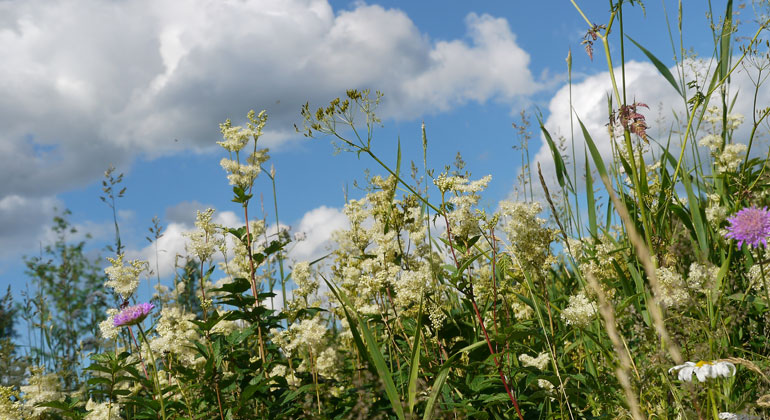Large-scale nature conservation efforts alone will not preserve benefits for our societies
05/16/2023 – The enlargement of protected areas and carbon price incentives for reforestation alone will not stop biodiversity decline and the ongoing loss of critical ecosystem functions, if they are not accompanied by measures that also target managed landscapes. A new study published in Nature Communications, led by the Potsdam Institute for Climate Impact Research (PIK), shows that even in scenarios with a high demand for land it is possible to maintain biodiversity-friendly landscapes, which also provide critical services such as pollination and healthy soils. The research demonstrates that land use is not a zero-sum game but that it matters where farmland is located in order to promote landscape diversity. With the right incentives, farmed landscapes could be managed in a way that enhances the numerous benefits nature offers to society and that support the biodiversity conservation targets of protected areas.
“The fact that the international community has agreed to put 30% of the land surface under protection by 2030 is a big step forward, but we should also not forget the other 70%. Ultimately, these are the areas, in which our economy and nature interact the most and which are home to many species that are most familiar to us,” PIK lead author Patrick von Jeetze explains. “From pollination and soil protection to mental health aspects and flood prevention, we know that green spaces in intensely-used landscapes and close to human settlements can provide many benefits. A well-organized network of green spaces also helps to better link-up protected areas, which would make it easier for species to migrate – a critical aspect especially in a changing climate.”
“There is broad consensus that 10-20% of permanent habitats, such as extensively managed grasslands or groves, should be maintained in areas of intense land use in order to provide an ecological reserve and to connect protected areas,” adds co-author Isabelle Weindl from PIK. “Our study shows that maintaining these habitats in farmed landscapes would in principle be possible at the global scale, even in scenarios with a strong competition between different land uses.”
A smart allocation of different land uses is key for balancing different land conservation goals
The study shows that what it takes is a smart and adaptive allocation of land use at the global scale to promote biodiversity-friendly landscapes and to balance different land conservation targets. At the same time, the study reveals that there exist important co-benefits between conservation measures. A Land-based climate mitigation scenario, for example, also caused a 75% reduction of soil loss at the global scale as compared to a reference scenario without climate action.
In a collaborative effort among scientists from PIK, the University of Minnesota, the University of Basel, and the European Commission’s Joint Research Centre (JRC), the researchers employed a new modelling approach by combining the open-source land-system model MAgPIE (Model of Agricultural Production and its Impact on the Environment) with the Spatial Economic Allocation Landscape Simulator (SEALS) and the Global Soil Erosion Modelling (GloSEM) platform. This allowed them to downscale land-use projections across four alternative future scenarios to the field scale (300m x 300m), in order to estimate how land cover changes at this relatively high-resolution could drive changes in pollination, landscape heterogeneity and soil loss by water erosion.
“Biodiversity-friendly landscapes are not a “nice-to-have”, but they are key for a sustainable, cost-effective and nature-based agricultural production. But it is also clear, that policies that increase landscape diversity should not be pursued in isolation. Our study shows that the creation of biodiversity-friendly landscapes is generally possible and does not lead to trade-offs with other conservation targets such as land-based climate mitigation. It now takes policies that combine environmental goals with better framework conditions that support farmers in generating wider benefits for society,” concludes study co-author Alexander Popp, leader of the research group on Land-Use Management at PIK. ”This is not only critical for reaching the global climate and biodiversity protection targets but also for getting farmers and other stakeholders on board”, says Popp.








